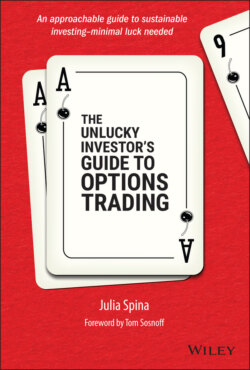Читать книгу The Unlucky Investor's Guide to Options Trading - Julia Spina - Страница 12
Preface
ОглавлениеIf the conditions are just right, extraordinary things happen when many individual pieces come together: Water molecules organize and form snowflakes; Cells arrange and create organs; Jet streams combine and cause tornadoes; Grains of sand rally and produce avalanches; Investors panic sell and induce financial crashes. Complex systems are composed of many interacting parts, and emergence occurs when these parts organize to create collective phenomena that no one part is capable of creating alone. Complex systems can be found in nearly every discipline, and the mathematics describing emergent properties is not only fascinating but indicates fundamental similarities between seemingly unrelated complex systems. The extinction of a species of fly due to an invasive species of frog has really nothing to do with financial markets, yet the dynamics of the fly population undergoing ecological collapse look nearly indistinguishable from that of a stock undergoing economic collapse. Many physicists gravitate toward finance because physical systems and financial systems can be analyzed with similar theoretical, statistical, and computational tools. It was my interest in those mathematical connections that drew me to finance initially. However, after placing my first trade at the start of the 2020 crash, I quickly learned the importance of financial intuition as well, particularly when trading options.
A trader's intuition comes from experience, but a trader can more efficiently build that intuition by supplementing market engagement with some basic trading philosophies. Many of the papers, books, and blogs I read as a new options trader offered detailed coverage of options theory and its mathematics, but I never encountered a resource that explicitly laid out the most essential elements of practical strategy development. Without a system of core trading principles, applying financial theory, interpreting and analyzing data, and cultivating any sense of market intuition was challenging. However, once a foundation of options trading fundamentals was in place, overcoming the options learning curve became a considerably more manageable process. In my personal case, this foundation developed from conversations with my coworkers at tastytrade (most of which were debates with Anton Kulikov), watching options markets regularly, using options data and theory to build actionable strategies, and a lot of trial and error. My goal in writing this book is to help new traders build their own intuitions more effectively by breaking down the philosophies that formed the basis for my own, beginning with a bit of math and market theory and building from there. Nothing substitutes for experience, and investors' first options trade will likely teach them more than any book. However, it's my hope this framework that Anton and I organized will allow new traders to enter the options market with confidence and gain meaningful value from their first trading experiences, in both the monetary and educational senses.
Julia Spina
